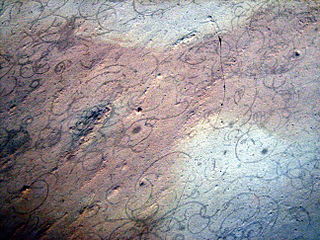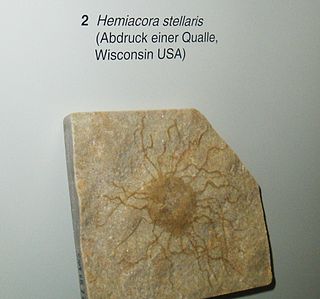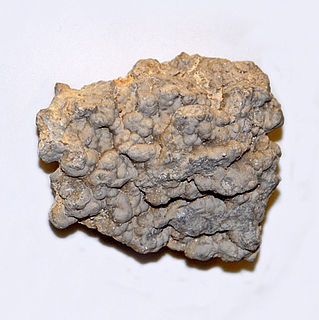 W
WErytholus is a form genus for problematic fossils of Cambrian age in South Australia. It has been of special interest because of its morphological similarity with the Ediacaran fossil Ventogyrus, and may have been a late surviving vendobiont. It could be a slime mold.
 W
WGrypania is an early, tube-shaped fossil from the Proterozoic eon. The organism, with a size over one centimeter and consistent form, could have been a giant bacterium, a bacterial colony, or a eukaryotic alga. The oldest probable Grypania fossils date to about 2300 million years ago and the youngest extended into the Ediacaran period. This implies that the time range of this taxon extended for 1200 million years.
 W
WHiemalora is a fossil of the Ediacaran biota, reaching around 3 cm in diameter, which superficially resembles a sea anemone. The genus has a sack-like body with faint radiating lines originally interpreted as tentacles, but discovery of a frond-like structure seemingly attached to some Heimalora has added weight to a competing interpretation: that it represents the holdfast of a larger organism. This interpretation would stand against its original classification in the medusoid Cnidaria; it would also consign a once-popular hypothesis placing Hiemalora in the chondrophores, on the basis of its tentacle structure, to the dustbin. Studies testing the feasibility of hypothesis investigated the possibilities that such fragile tentacles could be preserved, and concluded that it would be very improbable — especially as many Hiemalora bearing beds also contain such fossils as Cyclomedusa, but do not preserve the tentacles on these organisms.
 W
WPalaeopascichnus is an Ediacaran fossil comprising a series of lobes, first originating before the Gaskiers glaciation; it is plausibly a protozoan, but probably unrelated to the classical 'Ediacaran biota'. Once thought to represent a trace fossil, it is now recognized as a body fossil and corresponds to the skeleton of an agglutinating organism.
 W
WProtonympha is a form genus for problematic fossils of Devonian age in New York. It has been of special interest because of its morphological similarity with the iconic Ediacaran fossil Spriggina, and may have been a late surviving vendobiont.
 W
WThe extinct Solenoporaceae have traditionally been interpreted as a group of red algae ancestral to the Corallinales.
 W
WTawuia is a millimetric disc-shaped, most likely multicellular macrofossil from the Neoproterozoic. It is considered to be synonymous with Chuaria and Longfengshania, which, in turn, are thought to represent different life stages of the same organism.
 W
WVendotaenids are ribbon-shaped, carbonaceous, Precambrian macrofossils. They are thought to represent giant sulfide-reducing bacteria, similar to Thiomargarita. Many form genera, including Vendotaenida, have been described.